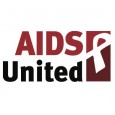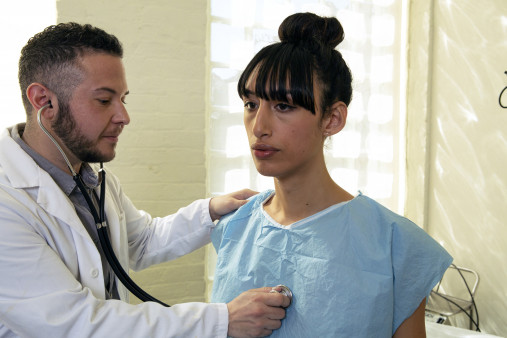At last week’s Midwest Syringe Services Programs: Virtual Institute, AIDS United’s Capacity Building Assistance team discussed the intersections of harm reduction, HIV prevention and gender-affirming care with participants from across the Midwest.
We know that transgender and gender-nonconforming people — particularly Black and Brown transgender women — are disproportionately affected by HIV. While prevalence for adults in the United States is less than 0.5%, prevalence among TGNC communities is 9.2%.
Looking at these numbers, we must also recognize that this is an estimate. For reasons related to safety and access, the information and data that we have on transgender communities is often limited. As the population of openly queer and transgender people increases, we must recognize that these numbers are more drastic than even this current dataset. TGNC people are often not captured in our data for a few reasons, including:
- Census data does not collect data on gender identity.
- Many health-related services are not tailored to the needs of transgender and gender-nonconforming people, meaning that public health data often misses these communities.
- TGNC people are less likely to have access to technology or health care in general.
- TGNC people are more likely to be “off the grid,” economically unstable, engaging in sex work, experiencing homeless, etc.
Understanding this landscape allows us to adapt to meet all the needs of TGNC people through trans-centered services.
When addressing the intersections of gender-affirming care and infectious disease care, many trans and gender-nonconforming people report that their experiences with discrimination and mistreatment in the health care system is their primary barrier to consistent care. When we do not understand the specific health care needs of TGNC communities, we cannot serve them in their wholeness.
We see a massive reduction of harm around mental health and physical health issues when TGNC people do have access to affirming medical care, particularly hormones. We see rates of anxiety, depression, PTSD, and suicide drop when accessing trans-friendly and culturally humble care. This is why we must find ways to change the current landscape of needs and provide services that live at the intersection of harm reduction and transgender health care.
Transgender and gender-nonconforming people and communities have specific needs within harm reduction programs. To eradicate health inequities that they may experience, we must build our programs and organizations in ways that are tailored to their specific needs. We must consider not just the tenets of harm reduction, but the overlap with TGNC healthcare and needs and infectious disease prevention and care. Some key practices to consider in moving towards trans-centered services include:
- Pay TGNC community members for their time, input and contributions to your program
- Consider how every part of your program or organizational procedures – such as intake forms, grant applications, and handbooks – might be creating barriers for TGNC people to exist freely and eradicate those obstacles.
- Provide supplies (such as a range of needle gauges in your local syringe services program) and services (such as connections to gender-affirming treatment and mental health practitioners) that meet the needs of TGNC people.
- Connect with TGNC people.
- Establish no harassment/discrimination policies to protect TGNC community members from harassment by other clients and staff.
- Continuously assess and ask the needs of your local TGNC community and seek out ways to link clients to appropriate care and services.
These are just a few recommendations as we honor this Transgender Awareness Week. Do not forget these considerations throughout the rest of the year either. Transgender awareness must extend into all our work in HIV prevention, care, advocacy, policies, procedures and beyond.








Comments
Comments